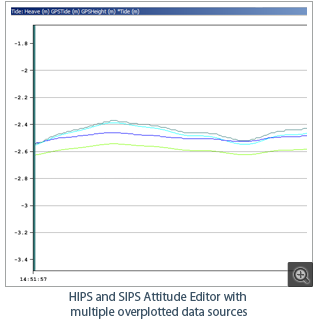News
New Sound velocity correction and ERS improvements in HIPS and SIPS
 CARIS has introduced a new Sound Velocity Correction (SVC) algorithm in HIPS and SIPS that significantly improves results for many deep-water sonars. The new algorithm accounts for the separation between transmit and receive arrays when performing the ray-trace. This key change in a fundamental assumption results in a more robust estimate of the path of each beam to the seafloor, particularly for deep-water sonars where the array separation is significant. The Sound Velocity Correction algorithm is based on research from the Ocean Mapping Group at the University of New Brunswick (UNB). To find out if you could benefit from this new algorithm contact CARIS Customer Services.
CARIS has introduced a new Sound Velocity Correction (SVC) algorithm in HIPS and SIPS that significantly improves results for many deep-water sonars. The new algorithm accounts for the separation between transmit and receive arrays when performing the ray-trace. This key change in a fundamental assumption results in a more robust estimate of the path of each beam to the seafloor, particularly for deep-water sonars where the array separation is significant. The Sound Velocity Correction algorithm is based on research from the Ocean Mapping Group at the University of New Brunswick (UNB). To find out if you could benefit from this new algorithm contact CARIS Customer Services.
Hydrographic agencies and offshore survey companies using high-accuracy GPS height observations, and ellipsoid to chart datum separation models to conduct Ellipsoidally Referenced Surveys (ERS) can now access enhanced quality control tools in HIPS and SIPS. These improvements better support ERS workflows, and allow users to simultaneously analyze multiple data sources (e.g. GPS height, computed GPS tide, observed tide, and others) from multiple survey lines to ensure hydrographic standards are met. The updates address a significant need for the hydrographic survey community, which voted enhanced tools for ERS as the #1 priority during the HIPS and SIPS User Group Meeting in June 2014.
Updates with the ERS and SVC improvements are available for download now from the CARIS Online Customer Services website for free for all HIPS and SIPS 9.0 users with a valid subscription.
Join our Mailing List
Subscribe to email announcementsOur Latest Tweets
Tweets by Teledyne CARIS Follow us on TwitterConnect With Us

